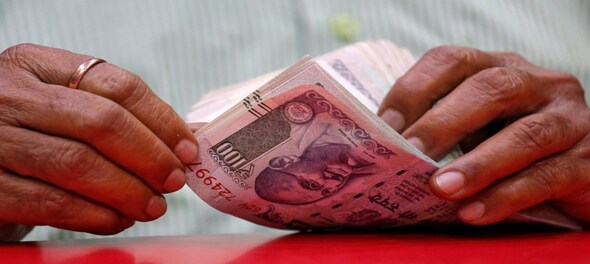
Even though government is still evading taking action on hike of minimum pay scale and fitment factor under 7th Pay Commission, the National Pension Scheme (NPS) is seen bringing major relief to central government employees, reported Zee Business
This month government has raised its contribution to NPS to 14 percent of basic salary from the current 10 percent. The government also approved tax incentives under 80C of the Income Tax Act for employees' contribution to the extent of 10 percent. Presently, the government and employees contribute 10 percent of basic salary each to NPS.
Here’s how central government employees under 7th pay commission can become crorepati. It needs to be noted that NPS works on defined contribution basis and will have tier-I and II. The contribution to tier-I is mandatory for all government servants joining government service on or after 1-1-2004 (except the armed forces in the first stage), whereas tier-II will be optional and at the discretion of government servants.
In tier-I, a government servant will have to contribute 10 percent of his basic pay plus DA, which will be deducted from his salary bill every month by the PAO concerned. The government will also make an equal contribution. tier-II contributions will be kept in a separate account that is withdraw-able by the government servant. Government will not make any contribution to tier-II account.
Coming to tier I, centre will now contribute 14 percent of basic salary to their pension corpus compared to previous 10 percent. Apart from this, the employees will continue to give 10 percent of their basic salary - which leads to overall 24 percent contribution towards pension. Apart from this, the government has exempted 40 percent of the withdrawal amount from taxes compared to previous 20 percent. 40 percent of the pension wealth under NPS is compulsory for opting annuity plan and the remaining 60 percent will have 40 percent tax exemption.
For example, if your basic salary is Rs 18,000 per month in level 1 pay scale of 7CPC and if you contribute 10 percent of your salary which would be Rs 1,800 along with Dearness allowance (9 percent from July 2018) of Rs 1,620, then the total contribution is Rs 3,420 in tier 1 account of NPS is made.
Also, if you start this investment at the age of 25 or before, then you pay Rs 3,420 per month for next 35 years, then your overall contribution comes at Rs 14.36 lakh. The interest earned on your investment comes to a whopping Rs 85.31 lakh taking overall pension wealth nearly at Rs 1 crore. The interest rate of NPS is projected at 9 percent.
Also, if 40 percent of the pension wealth comes at Rs 39.86 lakh, gets invested in annuity then remaining Rs 59.80 lakh can be withdrawn. The amount invested in annuity will give you over Rs 26,000 per month pension after retirement age of 60. The remaining Rs 59.80 lakh amount withdrawal can be tax exempted at the rate of 40 percent.
Check out our in-depth Market Coverage, Business News & get real-time Stock Market Updates on CNBC-TV18. Also, Watch our channels CNBC-TV18, CNBC Awaaz and CNBC Bajar Live on-the-go!


Fight of heavyweights in Sambalpur where farmers, weavers hold the key
May 17, 2024 12:25 PM
Odisha: Fight of heavyweights in Sambalpur where farmers, weavers hold the key
May 17, 2024 10:22 AM
Lok Sabha Election 2024: What rural Delhi wants
May 16, 2024 10:10 PM
Over 50 onion farmers detained in Nashik ahead of PM Modi's visit
May 16, 2024 11:14 AM

